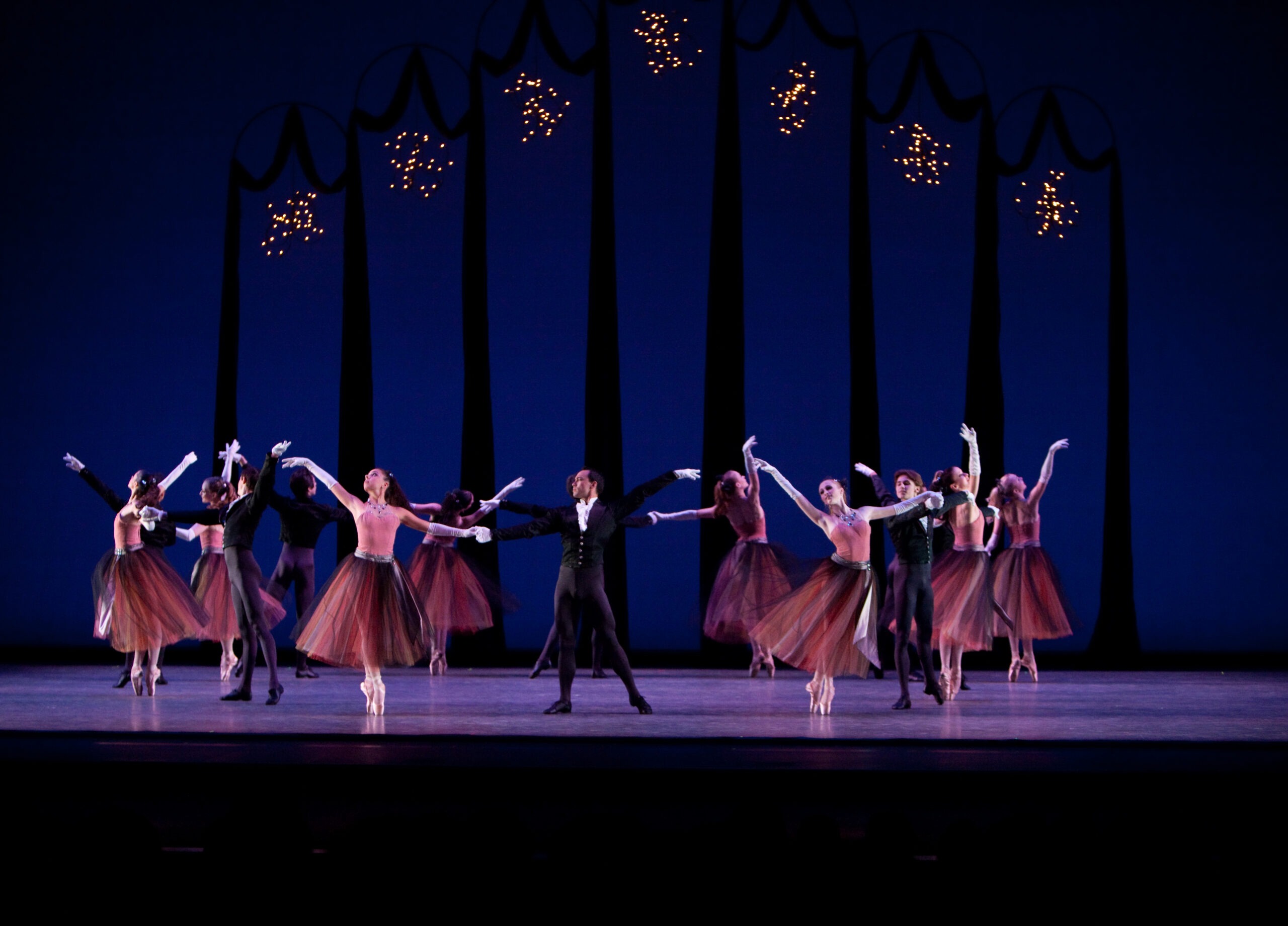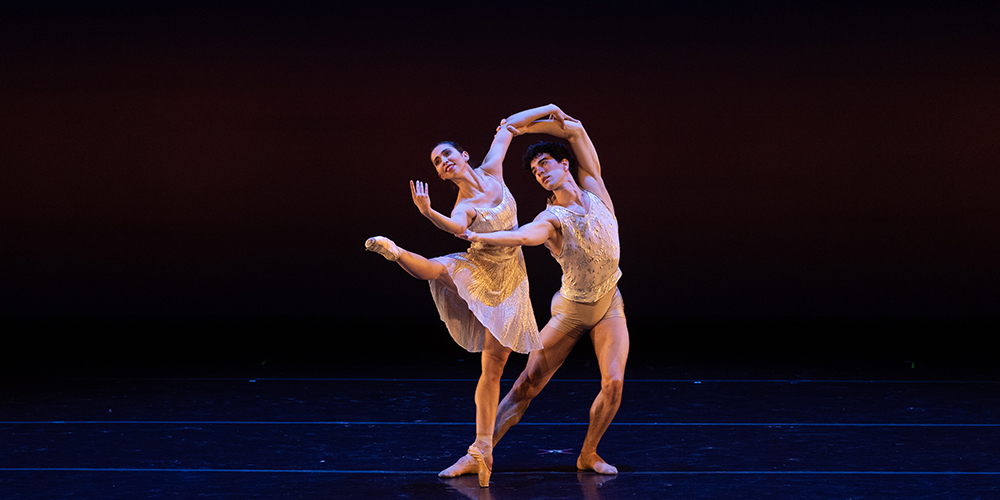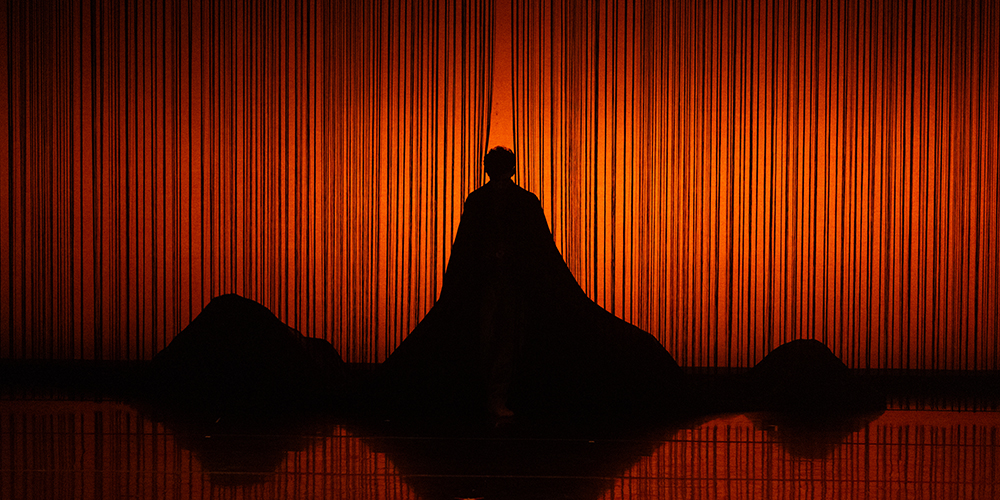In preparation for the production of All Balanchine, we are delving into the history of George Balanchine’s La Valse!
La Valse was choreographed by George Balanchine to Maurice Ravel’s Valses Nobles et Sentimentales and La Valse. The ballet premiered for the first time with the New York City Ballet on February 20, 1951 at the City Center of Music and Drama. The performance features couples waltzing in a cavernous ballroom, where a woman in white is both horrified and fascinated by the uninvited figure of death, who ultimately claims her life.
In 1951, when Balanchine decided to choreograph La Valse, he first chose the music of Maurice Ravel’s La Valse. Ravel wrote the score for ballet impresario Sergei Diaghilev, who commissioned the score but later rejected it for being “un-theatrical”. The score was passed around to several ballets, all of which were unsuccessful. When Balanchine came across the score, he was inspired, although he found the score to be too short for a ballet, he preceded it with Valses Nobles et Sentimentales. Balanchine previously knew of Valses Nobles et Sentimentales from William Dollar, who had formerly choreographed to the score for Ballet Caravan, Balanchine’s previous company. Valses Nobles et Sentimentales was originally written for the piano but was later orchestrated for ballet. At the time, the New York City Ballet Orchestra was incapable of performing a score this large in scale, but after being pressured by conductor Léon Barzin, the City Center of Music and Drama allowed the company to add a dozen more musicians.
The costumes for La Valse were designed by Barbara Karinska, who collaborated with Balanchine for more than seventy ballets. When creating, Karinska would make endless sketches by pasting pieces of fine fabric onto pencil-drawn figures on heavy watercolor paper. In La Valse, she designed ball gowns for the women and evening suits for men. The costuming took inspiration from France, where Karinska had lived prior to moving to the United States to work with Balanchine.
After La Valse premiered, it was added to the repertory of the New York City Ballet after its major success. In June 1953, La Valse was featured in Premiere, the first commercially sponsored television program to be broadcast in color and aired by CBS. After five years, it was officially removed from the repertory when Tanaquil Le Clercq, a dancer who originated a role in La Valse, became paralyzed after contracting polio. La Valse was not performed again until 1962, after Le Clercq taught her role to Patricia McBride. The ballet received many praises and acclaims from critics. One critic, Anatole Chujoy described La Valse as “neo-romantic, permeated with the spirit of the romantic period of the 30s of the past century”. The New York Times stated “Ravel’s music, with its sour triumph, and Mr. Balanchine’s inexorable choreography, heartlessly whirling, tells it all. At this performance [the dancers], were brilliant. Also the costumes by Karinska are exquisite, and Jean Rosenthal’s fluttering gauze setting — like her lighting — is completely evocative. The scene looks like a Christian Berard [painting] — which is rare for New York City Ballet”.
After many years, La Valse is still performed throughout the United States by many distinguished ballet companies.







